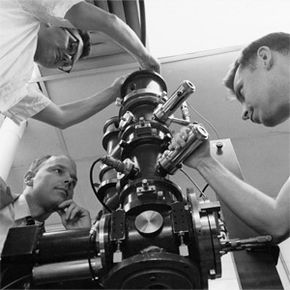In 1993, Charles Smithart was convicted of the murder of an 11-year-old girl in the town of Glennallen, Alaska. Prosecutors suspected Smithart after he was spotted at the scene of the crime, but they had no evidence directly linking him to the murder. That's where a scanning electron microscope (SEM) came in.
Using the X-ray spectroscopy detector of an SEM, a forensic scientist analyzed bits of iron found at the scene of the crime. He found that they had a globular shape that only welding or grinding produces. As it turned out, Smithart had a welding rig in his shop and would sometimes repair bicycles for the local children. Thanks to the tremendous capabilities of scanning electron microscopes, prosecutors had the evidence they needed to link Smithart to the crime.
Advertisement
Why was an SEM, rather than a regular light, or optical, microscope from the local high school, necessary to examine the evidence for Smithart's trial? For one thing, SEMs can magnify objects at upward of 300,000 times the size of the object studied. Scientists refer to this number as the magnification power and denote it, for example, as 300,000x. In contrast, run-of-the-mill optical microscopes tend to have a magnification power of a few hundred times. SEMs also have tremendous depth of field compared to traditional microscopes, providing an almost 3-D image for researchers to analyze, as compared to the flatter image an optical microscope produces. Lastly, these advanced microscopes can look past the surface of an object, telling researchers information about its composition. All of these attributes proved essential in examining evidence from the Smithart case.
Of course, SEMs have their share of drawbacks as well, like cost. Even the cheapest among them cost tens of thousands of dollars. They're also bulky and complex instruments, requiring considerable expertise to operate. As a result, their use is typically limited to research and industrial applications, though recent breakthroughs have made SEMS more accessible in other applications.
In this article, we'll learn how SEMs are able to produce such detailed and striking images. In the process, we'll explore what goes into operating one, as well as some of the most recent breakthroughs in SEM technology. But before we learn about where the technology is headed, let's look at where it all began.


